Here’s Part 2 of this skincare series on exfoliation. Part 1 was on physical exfoliating tools and scrubs, this time we’re tackling the more complex chemical exfoliants, before moving onto picking the right exfoliation routine for your skin in Part 3. For a simpler overview, you can head to this exfoliation basics post, and for a more user-friendly version check out my free exfoliation guide.
What’s exfoliation again?
Your skin is covered in a thin protective layer of dead cells (the stratum corneum) which naturally shed over time in a process called desquamation. Sometimes this layer gets too thick, resulting in dull, rough skin. Exfoliants help the shedding along, resulting in more even, “glowier” skin.
What’s chemical exfoliation?
Chemical exfoliants help cells shed in a more indirect way than physical exfoliation, which works using friction between the tool or scrub and the skin. The mechanism of how chemical exfoliants work aren’t always obvious, but the most common theories and methods of how they work are:
- by normalising cell turnover – that is, how quickly cells in the epidermis die and migrate to the stratum corneum, pushing old cells out. Exfoliants do this by travelling to living cells under the dead layer and telling them to change how they behave – in more technical terms, they act on receptors to upregulate cell division. (Technically, any ingredient that does this is a drug, but regulations around these “cosmeceuticals” is pretty iffy.)
- by unsticking the cellular glue (desmosomes) holding dead cells together in the stratum corneum.
Chemical exfoliation is touted to be gentler than physical exfoliation, mostly because it’s less prone to user error. However, how well it works depends largely on the formulation of the product. A poorly formulated product might not work, or it might work so well that it irritates your skin and causes uneven pigmentation and chemical burns.
Product categories
Click on each heading to jump to that section.
Leave-on Hydroxy Acid Products
Hydroxy acids are the most common ingredients in chemical exfoliants. There are two main types:
- Alpha hydroxy acids (AHAs), which includes ingredients like glycolic acid, lactic acid, malic acid and mandelic acid. Glycolic and lactic acids are most common in skincare, and the vast majority of scientific studies on AHAs are based on the action of glycolic acid.
- Beta hydroxy acids (BHAs), of which salicylic acid is the only one commonly used in skincare (I’ll be using the terms “BHA” and “salicylic acid” interchangeably).
A few ingredients are technically both alpha and beta hydroxy acids such as citric acid, which acts more like an AHA.
It’s not 100% clear how AHAs and BHAs work to exfoliate the skin – it’s likely to be a combination of the two actions described at the beginning: increasing cell turnover at the epidermis and unsticking stratum corneum cells. As well as just removing build-up of skin, they can also improve hyperpigmentation and reduce the appearance of wrinkles.
There are a few key differences between AHAs and BHA/salicylic acid:
- Solubility: The commonly used AHAs (glycolic acid, lactic acid) are water soluble, while salicylic acid is oil soluble. Theoretically this means salicylic acid is better for treating oily skin and clogged pores because they can penetrate through sebum and sebum plugs, but there’s a lot of variation between people’s experiences. You’ll generally find AHAs in products for dry, ageing skin, and BHA in products for oily, acne-prone skin.
- Sun sensitivity: Glycolic acid is documented to cause sun sensitivity for a while even after you finish using it, while salicylic acid isn’t. Salicylic acid has a UV protective effect while on the skin, due to the benzene ring in its structure which lets it act as a chemical sunscreen. You need to wear sunscreen while you use alpha hydroxy acids, and for at least a week after you finish – otherwise, you can actually cause more wrinkles and uneven pigmentation and sagginess than you started off with! And you should use sunscreen with salicylic acid anyway.
- Other effects: Salicylic acid can have some anti-inflammatory action, depending on whether enough gets through the skin – it’s actually one of the active forms of aspirin. Glycolic and lactic acids are humectants that act to slow down the evaporation of water from the skin.
All the AHAs have slightly different potency/side effect profiles too. Glycolic acid is the most potent and can give the most dramatic results. This is due to the fact that it’s the smallest so it gets through skin most easily, plus it means that in an 8% glycolic acid product, you’ll have more AHA molecules than in an 8% product of any other AHA. On the other hand, this also means that it’s the most likely to cause side effects, particularly for people prone to post-inflammatory hyperpigmentation or PIH (generally, people with darker skin). Most of the information we have on AHAs is based on glycolic acid studies. (Side note: it’s highly probable that the other AHAs work similarly to glycolic acid, but it’s possible that scientists will later find major differences between the AHAs). Lactic acid is larger than glycolic and generally causes less side effects, presumably because it penetrates less deeply into the skin. Mandelic acid is larger still – it’s the AHA most often recommended for PIH-prone skin.
A newer, “next generation” class of hydroxy acids are the poly hydroxy acids (PHAs). PHAs are supposedly less irritating than AHAs and BHA, and don’t increase sun sensitivity. They are also reported to increase skin elastane and inhibit matrix metalloproteinases, which break down collagen and lead to sagging and wrinkles. It’s a bit hard to say for sure that they work, since all of the handful of studies on them were by Neostrata, who happen to hold the patent on them, but Neostrata are the company who pioneered AHAs so it could well be the next big thing. Two PHAs you might find in your products are gluconolactone and lactobionic acid.
The biggest issue with picking a hydroxy acid product is pH. If the pH is too high, the acid won’t penetrate the skin at a high enough concentration to work; if the pH is too low, then you run the risk of irritation, chemical burns and long-lasting damage like PIH. Then there’s also the issue of the concentration of acid in the product. There’s a more technical discussion on the science behind this here, but the general rules of thumb for effective leave-on hydroxy acid products is:
- AHAs: pH less than 4, concentration of 4-10%
- BHA/salicylic acid: pH less than 3.5, concentration of 1-2%
You can usually find the concentration on the bottle or if you ask customer service nicely. For pH, you can also test with pH strips or a pH meter (I prefer strips, since they’re more reliable and less prone to calibration errors).
(Note: I haven’t included low concentration rinse-off hydroxy acid products like cleansers here because I’m not convinced they work that well – however, they could be a good option if your skin is very sensitive.)
How to use
Smooth a small amount (5-10 drops) of hydroxy acid to a cleansed, bare skin. Wait a few minutes for it to soak in (so you don’t accidentally mess up the pH with your next product), then continue with your routine (serums, moisturisers, whatever). If you find that your skin gets too irritated, you can apply your next product immediately afterwards (or use less, or use a weaker product). Start with a once-a-week application, then build up as your skin gets used to it – I find that my skin stays non-irritated and glowy if I use a hydroxy acid product 2-3 times a week. Make sure you use a good sunscreen with UVA and UVB protection while using AHA products (you should be doing this to prevent sun damage anyway!).
Examples
It turns out I own a LOT of hydroxy acid exfoliants. Here’s my AHA stash:
The most popular hydroxy acid exfoliants are from Paula’s Choice – their exfoliants are really well formulated, with the right concentrations and pHs to work, and they’re usually pretty gentle on skin as well. 8% AHA Gel contains glycolic acid (pH 3.5-3.9). Most AHA exfoliants sting a bit on application due to the low pH – this is no exception!
Neutrogena Pore Refining Toner (glycolic acid ?%, salicylic acid 1?%, pH 3 – full review) doesn’t disclose quantities but it’s probably the most widely available chemical exfoliant in Australia (correct me if I’m wrong!). Alpha-H Instant Facial (glycolic acid, 10%, pH 3 – full review) comes in spray form so you can apply it over make-up if you dare. Neostrata Gel Plus (15% glycolic acid, pH 4 – full review) is one of the most concentrated AHAs I own – the 25% glycolic product calls itself a peel. This stings a bit on application.
On the gentler side, there’s Pixi Glow Tonic (glycolic acid, 5%, pH 4-5 – full review) which has a low amount of active AHA, but it’s non-irritating. Pharmacie Florit Creme Aux AHA (lactic acid, 11%, pH 3) from a compounding chemist in Lyon contains lactic acid, which is supposed to irritate less. I’ve thrown Love Life Beauty Light Lightening Cream in here too – it’s a moisturiser that contains “alpha fruit acids” to exfoliate as part of its lightening formula. I’m seeing AHAs incorporated into more moisturisers these days.
(I accidentally put the Ole Henriksen Lemon Strip here – it should go into the peels section!)
Having oily, acne-prone skin, I reach for BHA products when those pesky dark plugs (commonly called “sebaceous filaments”, though I don’t think it’s the right term – controversy!) appear on my nose. I’ve been a huge fan of Paula’s Choice 2% BHA Liquid (pH 3.2-3.8) for years, and have gotten my sister into it too. It also comes in a handy spray (Clear Acne Body Spray) which is great for dealing with bacne (back acne).
Stridex Single-Step Acne Control Maximum Strength Pads (aka “Stridex in the red box” – 2% salicylic acid, pH 3-4) is a fantastically affordable cult product amongst skincare nerds. The other Stridex versions have a lower concentration and higher pH, so they won’t work as effectively. They’re a bit drying so I never really use them on my face much, plus you can’t get these in Australia (yay iHerb! US folks can also get them at Amazon, Walgreens and drugstore.com).
Lower concentration products – Benton Aloe BHA Skin Toner has 0.5% salicylic acid at pH ~5, while Bioderma AKN has an unknown amount (probably also < 1%). These won’t be very effective as your sole chemical exfoliant.
The odd ones out: La Roche-Posay Effaclar Duo contains a salicylic acid derivative that dissolves even better in oil, known as capryloyl salicylic acid. I think it’s a patented L’Oreal ingredient, so the only studies on it are from their labs. It’s supposed to work as well as benzoyl peroxide for acne, and be effective at low concentrations. Neostrata Exuviance Vespera Bionic Serum is the only product I’ve tried so far that contains PHAs – this has gluconolactone and lactobionic acid, as well as some mandelic acid, at a pH of 3.5 in a gel base. It doesn’t sting much, but I haven’t noticed a significant difference in effect between this and the other exfoliants I’ve used.
Peels
At-home chemical peels usually contain hydroxy acids at high concentrations and lower pHs than leave-on products, although there are some more hardcore peels which use different ingredients like trichloroacetic acid (TCA) and tretinoin. Medium and deep peels are generally performed in spas or clinics.
Superficial peels are essentially a controlled chemical burn that can improve acne, pigmentation and shallow wrinkles. Repeated treatments are usually needed to see significant results, but the beauty of them is that you can leave the house a few hours afterwards. Note: Peels aren’t supposed to make your skin come off in sheets.
How to use
In general, you apply a peel for a few itchy, burning minutes, then wash it off or neutralise it. Some peels are self-neutralising, so you can leave them on your skin. Peels aren’t for the uninitiated – you should be training your skin up for a while with increasingly strong leave-on exfoliants containing the same ingredient as your intended peel. Here’s a tutorial on how to work up to and perform an at-home chemical peel.
Examples
It’s pretty easy to get your hands on a peel these days, which is a bit worrying because I can imagine it going wrong on so many levels… but maybe I’m just paranoid, since there are so many worse things in the average household like fire and bleach and lye.
Here are the peels I’ve tried so far. John Plunkett Glyco Peel is a leave-on glycolic acid (25%, pH 3-4) peel – you’re supposed to use it overnight, but it advises that you can wash it off if it’s too intense for your skin. [re]fresh Fruit Acid 15% Gel Peel contains glycolic, lactic, kojic and pyruvic acids in a thick gel base which makes it easy to spread without going everywhere. It’s quite gentle and suitable for a beginner. Makeup Artist’s Choice (MUAC) has a range of peels, including 8% Beta Hydroxy Serum which contains salicylic acid, which I found a bit more irritating than the first two peels. I’ve also tried Goldfaden MD Fresh A Peel but I can’t find much information on its ingredients or pH. Ole Henriksen Power Peel Lemon Strip (which I’m yet to try) contains glycolic and lactic acids at 20% total and pH 3 – it’s the middle step in a routine where you use a scrub first, do the peel for 2 minutes, then dilute it with a chamomile mask.
Retinol and Retinoids
It’s controversial whether retinol should be counted as an exfoliant – I’m including it here, because it increases cellular turnover which helps skin cells detach, plus for it to work it has to be converted to tretinoin in the skin, and tretinoin is used on its own in peels. Retinol is a form of vitamin A which is available without a prescription. Some more potent forms (retinoids like tretinoin, adapalene and tazarotene) require a prescription. As well as exfoliating, retinol and retinoids also inactive collagen-destroying matrix metalloproteinases and act as antioxidants.
How to use
Apply to skin at night (light breaks them down). Retinol and retinoid products are usually formulated so that only a pea-sized amount is required for the entire face. They’re pretty notorious for causing visible peeling and flaking due to irritation – if this happens, use less or mix it with a rich moisturiser to dilute. I use retinol once or twice a week, but some people use retinol/retinoids nightly.
Examples
Life Flo Health Retinol A 1% is THE most budget-friendly retinol product in my mega-table and is strong enough to cause irritation – which isn’t really a good thing, but at least you know it works! It’s in opaque jar packaging which means the amount of active product will drop over time, as retinol isn’t the stablest of ingredients. My other retinol products come in pumps – Indeed Labs Retinol Reface, Neostrata Pigment Controller and Paula’s Choice Resist Intensive Wrinkle-Repair Retinol Serum all contain ~0.1% retinol. Paula’s Choice also has the stronger Clinical 1% Retinol, which turned my face into peel city before I learned to be more careful.
Enzymes
Enzymes are proteins which perform specific biological functions. The enzymes we’re talking about here are proteases or proteolytic enzymes – they break bonds holding other proteins together. These enzyme exfoliants work by breaking the strands of protein holding stratum corneum cells together – essentially the “mortar” in between the cell “bricks”.
The most popular enzymes used for exfoliation are bromelain from pineapple, papain from papaya, pumpkin and Bacillus bacterial enzymes. You’ll see them in packaged products, or you can DIY a mask using mashed fruit.
Theoretically, the upside of enzyme exfoliants is that they’re large and don’t penetrate far into the skin, so the amount of irritation is limited, and they can be rinsed off completely. Their action is also less pH dependent than hydroxy acids, so you don’t need to apply strongly acidic products to your face for extended periods. However, there’s very little research on their use as exfoliants in skincare.
How to use
You apply the product to cleansed skin. After a set amount of time, you rinse it off and continue with your routine.
Examples
I have two enzyme products in my collection: Ella Bache Revealing Fruit Enzyme Exfoliant contains pineapple and papain enzymes, while Jurlique Fruit Enzyme Exfoliator contains Lactobacillus/pumpkin fruit ferment filtrate. I also like rubbing fresh kiwi fruit peels on my face when I have them handy – after 10 minutes I rinse it off and my skin is glowing.
Stay tuned for the final installment, which is on how to choose which exfoliation methods to include in your routine!
Some of these products were provided for editorial consideration, the rest were purchased with my own hard-earned moolah – unfortunately there’s way too many here for me to remember which were what! This post contains affiliate links – if you decide to click through and support Lab Muffin financially, thank you. For more information, see Disclosure Policy.
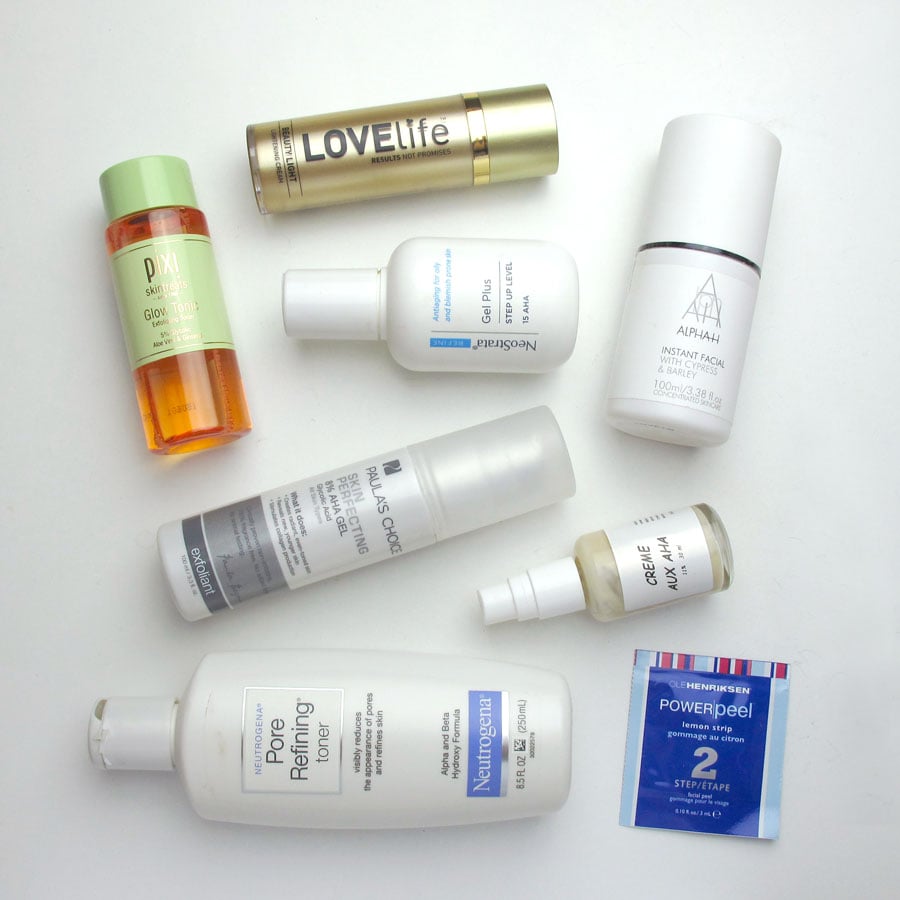
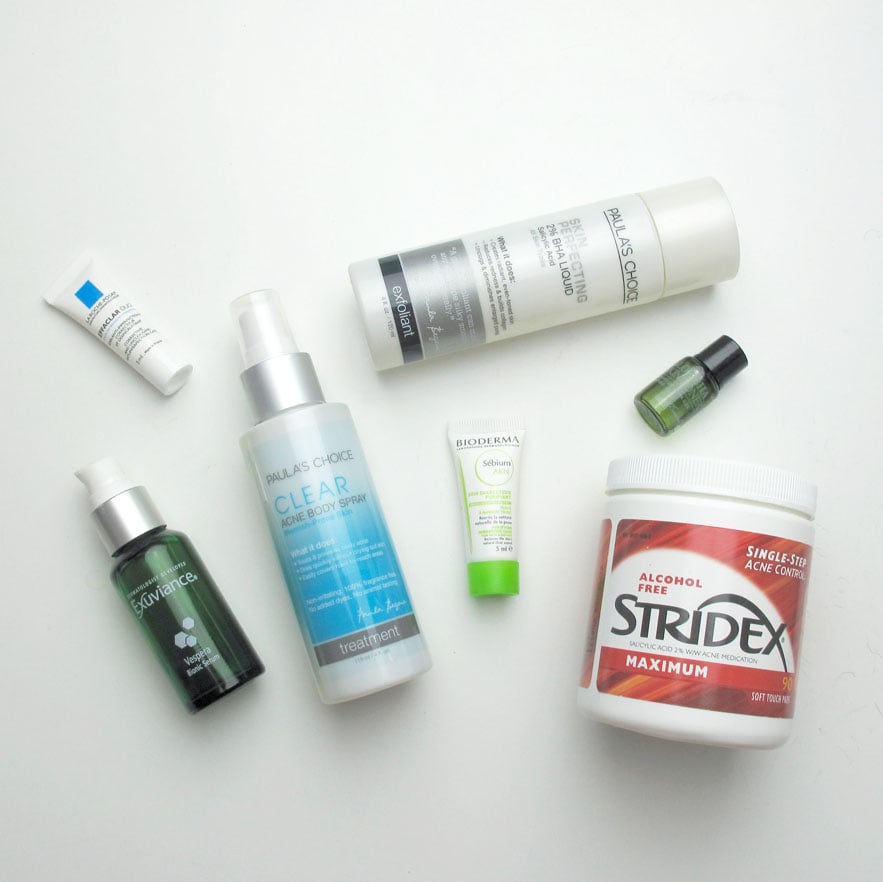
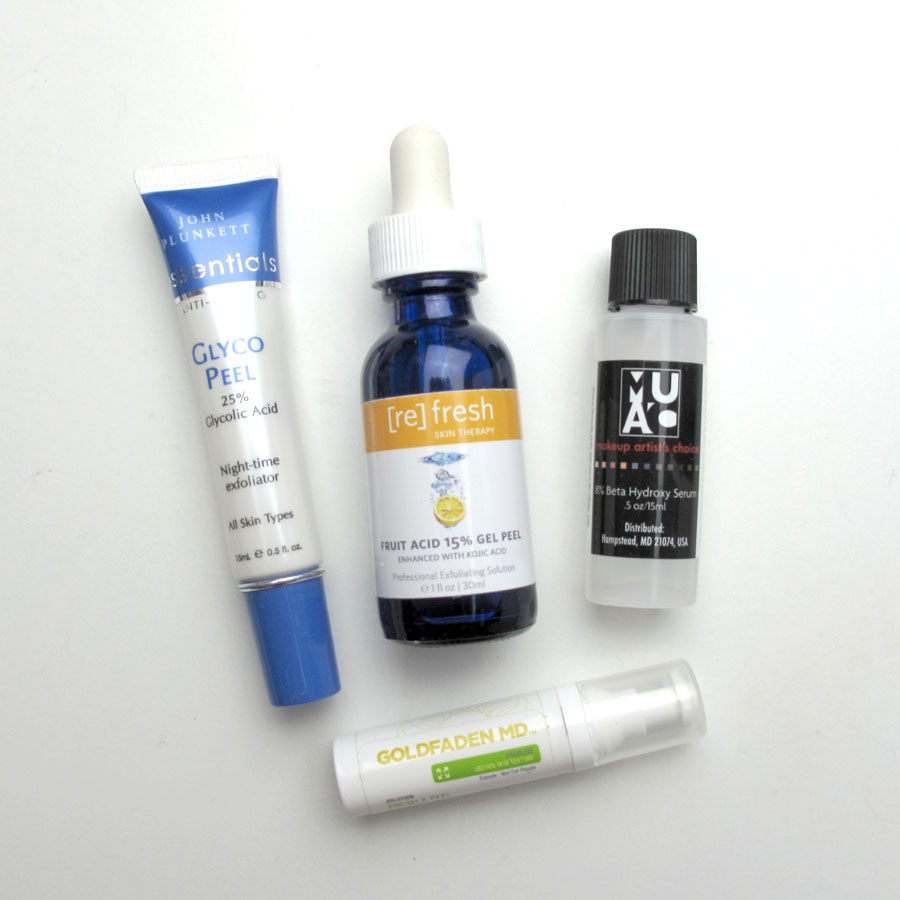
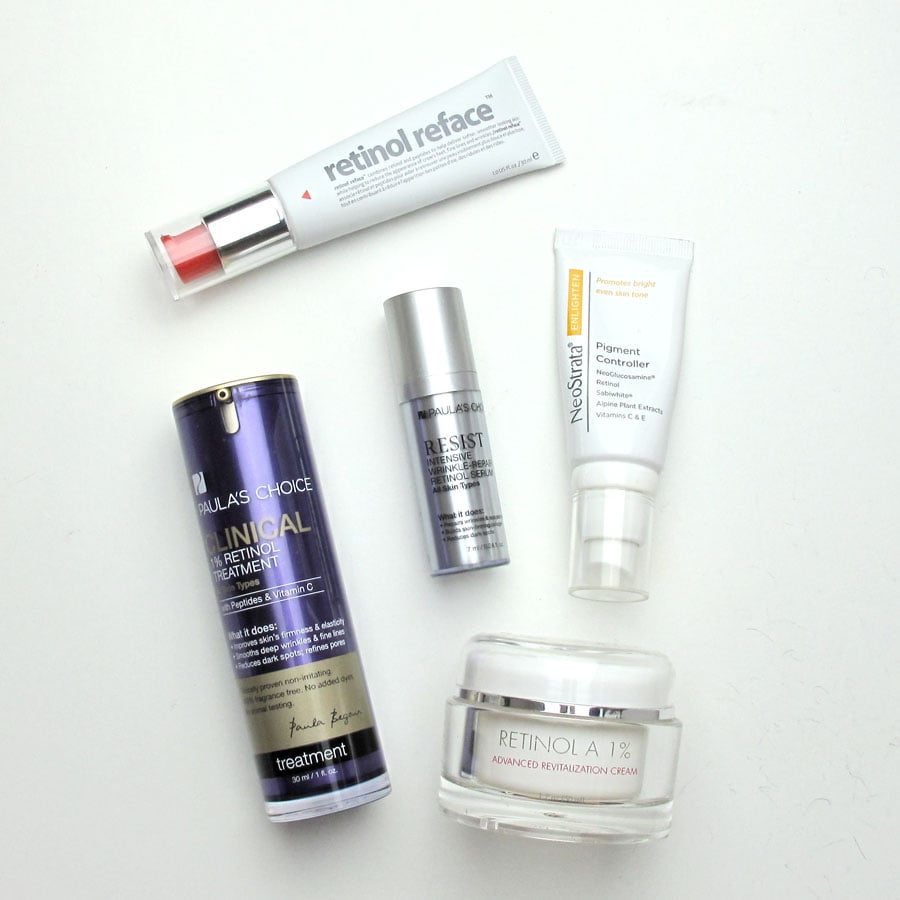
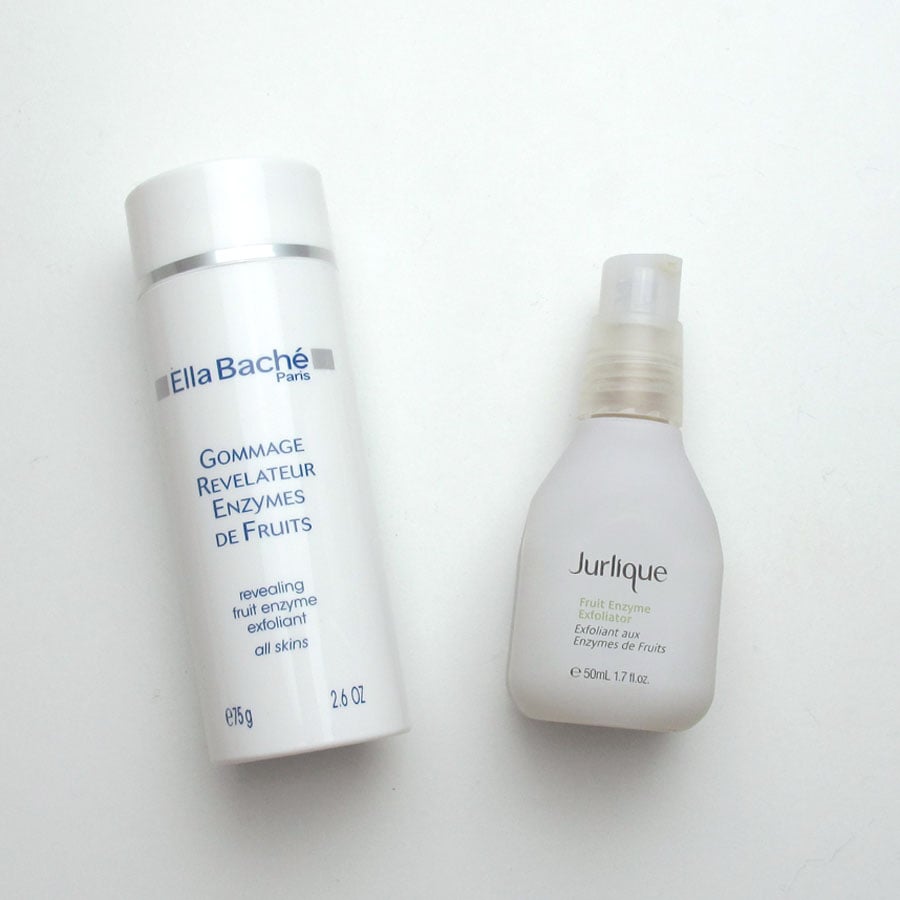
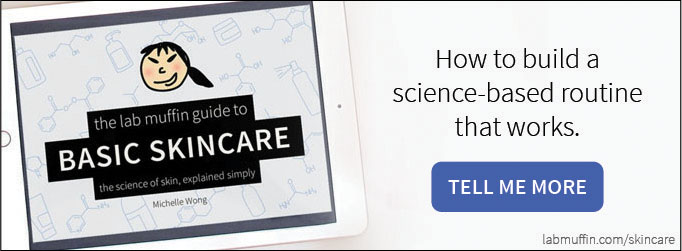
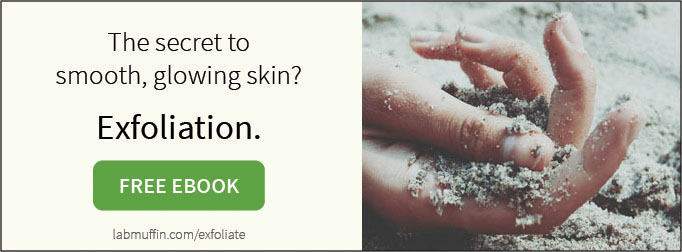
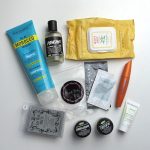
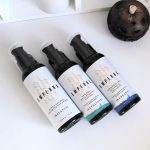
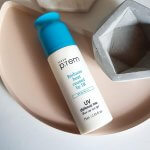
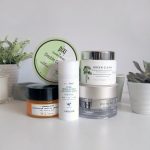
Loving this series, super helpful! I’m doing chemical exfoliation a lot more than manual these days, it just works so well for my skin! Thanks for the recommendations as well, I’ll have to refer back to this post when I’m in need of new products!
Tasha // shiwashiful.
Great post! this is a really helpful series, thanks for all the info. you may have done this already, but a post with all your favorites in each category would be great!
Very informative post!! I have some glyco pads which I use for chemical exfoliation but I always forget about them!
Amazing post! This was super helpful as always. I’m currently writing a review for a BHA product and I’ll link back to two of your posts because your explanations are so easy to understand. 🙂
This is a great series! I like your non-BS approach to beauty and the science behind it 😉 I’m more of a natural exfoliation person because my skin is too sensitive to use chemical peels, but I have to say they do wonders for dull skin in the winter.
Thank you! 😀
Love this post, it’s really informative! I started out with Paula’s Choice BHA but for some reason it makes my face really greasy afterwards. I’ll have to look into some of the other BHA products you mentioned in this post!
I think it might be damp and sticky rather than greasy – it contains a lot of butylene glycol which is a humectant, sort of like dilute honey, and absorbs moisture from the air. Unpleasant either way!
MOST AWESOME POST EVER!!! I am not sure what more you’d ever need to know about chemical exfoliates! I am tweeting, pinning, saving this FOREVER more – haha!
From what i have read on Lactic acid, it has a slight edge on the other exfoliates as it has been shown to decrease TEWL, boosting skins hydration. Double whammy for slightly dull ‘n dry skin – whoopwhoop.
http://www.honestyforyourskin.co.uk
From what I remember, the other AHAs do as well (though I’m not sure which one does it best) – they’re all humectants I think! I have a particular fondness for lactic acid because I’m PIH-prone and glycolic acid worries me a little (not enough to stop using it entirely though!).
I am very much into chemical exfoliants, mostly AHAs and BHAs, but it was still a brilliant read! Paula’s salicylic clear liquid is by far my FAVOURITE, although the results when it comes to blackheads are not SPECTACULAR. Still good.
I make my own mandelic & lactic acid peels and leave-ons as well – as long as you’re careful calibrating the pH (not only the %) – they are incredible for sensitive, acne-prone skin. Fantastic post, as always.
I wish I had the time and confidence with preservatives to make my own HA products! That sounds fantastic 😀
While its not a peel, the Tangerine Tingle (from CItrus Clear) works just like a peel, you just have to LEAVE IT ON FOR 5 MINUTES. Its starts to tingle, and that is the glycolic acid working. Once you wash it off, its like having a professional $100 glycolic peel. Highly recommended.
Hmmm… you make it sound appealing, but the product description on the website is just SO BAD that I can’t trust it. The ingredients list doesn’t say glycolic acid, but the description on the site says it contains glycolic acid… under the heading of “amino acid exfoliators”. Glycolic acid isn’t an amino acid, and amino acids don’t “work extremely well to keep pores from clogging” or for “smoothing a complexion, and eliminating sun / age spots”. It either has an illegal ingredients listing, or it doesn’t contain glycolic acid. So I think I’ll be giving this one a wide berth!
Can you use a Chemical exfoliator after a physical exfoliator or is not recommended?
I use the CosRx BHA Blackhead Power Liquid
and the Skinfoold Strawberry Blacksugar Mask Wash off.
Yes you can, as long as your skin can handle it! I frequently use a peeling gel, then a leave-on chemical exfoliant a few hours afterwards.
What is your opinion on Azelaic Acid? 🙂
I found an AHA that I like, but the percentage is a little weak, could I just use a bit more of it? Or should I search for a formulation with a higher percentage?
You could, but it might not be as effective. Since you already have it though, it’s worth a try! You could also try using it more often (e.g. twice a day) and seeing if that makes a difference at all.
Question, why are the Paula’s choice products striked out??
Do you not recommend them anymore?
Oh I think the links are just broken! I still recommend them 🙂
I’m African American and I have been dealin with my skin for ages. I have extremely bad hyperpigmentation and dark spots. I was out on triluma and it workwas s while I was using it and when I spotted my dark patches came back with avengous.
I tried retin- a and my skin never gotten over the purging. I used rosehip oil and Cerave pm lotion it helps keep things moistured but I want even tone and clear skin. I don’t get PIMPLES as much anymore since I’m on spiro and it’s been helping a lot.
I’m currently using Tazorac and it’s really been tough. I haven’t been able to get the peeling and flaking under control. please help!!
Love your website, keep up the great work. Your helping so many people love they’re skin!
I’m planning to start using tretinoin cream soon, hopefully I will be able to find something for the peeling!
Hi Michelle! I’ve seen the home DIY kiwi peeling trick on your Instagram, and I would love to try it but I haven’t found any info about the pH of the fruit, maybe you could help me out 🙂
It’s about 3.5 🙂
So much valuable information right here! Love everything you put out <3
I’ve been using stridex pads as deodorant for a week now, I’m just curious if it could stain any of my good clothes?
Hi! I have a Q regarding what you wrote about the different pH being necessary for different HAs for proper penetration. Since separate products are hard to come by at a reasonable price where I live (Paula’s Choice products are sold here at insane mark-ups, some easily up to 150%) I was very glad to find a budget-friendly toner by Eveline Cosmetics (I have no idea if you’re familiar with the brand, but I’m just putting it out there) which has *all* the HAs in it (and I do mean all), plus some other cool ingredients, like niacinamide (which I recently read needs a neutral environment). It’s designed for everyday use, so it’s probably very mild, but now I’m wondering if that kind of all-in-one product can even be effective at all, or if all those actives need different pHs to be effective. I know you can’t know how their product is formulated, but I believe you might be able to tell if it’s a for-sure red flag regarding proper formulation and I should look extra hard for separate products. (I know it would be easier for you if I could give you its pH, but I can only order the strips online, and it’s a bit of an investment:)).
Any thoughts appreciated! Thanks!